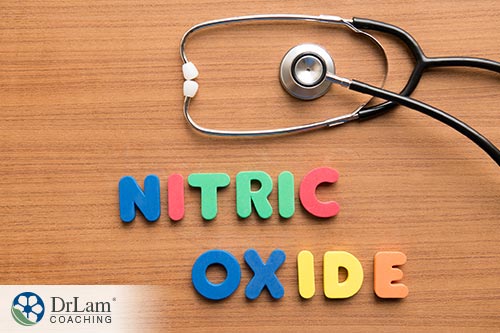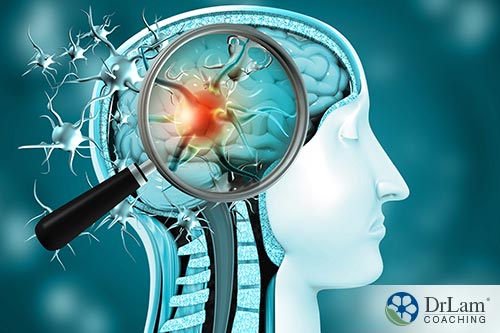 Nitric oxide (NO) is a very important molecule for the human body. It’s essential to both mental and physical health. That's because it is involved in the modulation of many functions such as wound healing and gene regulation. This molecule is an essential component in your health and wellbeing.
Nitric oxide (NO) is a very important molecule for the human body. It’s essential to both mental and physical health. That's because it is involved in the modulation of many functions such as wound healing and gene regulation. This molecule is an essential component in your health and wellbeing.
Some of the functions of nitric oxide include:
Its deficiency is also involved in many diseases, including heart disease, hypertension, strokes, diabetes, autoimmunity, nephritis, asthma, neurodegeneration, and mental health issues.
If you’re healthy, your body can produce nitric oxide through specific pathways. This is what’s called endogenous NO. And if you eat healthily, you’ll also be getting it through your food. This is a type of exogenous NO. You can even take it in the form of a supplement, which is another type of exogenous NO.
One of the most important functions of nitric oxide is that it’s a signaling molecule in the vascular system. This means that it is used by your cells to send signals to each other. In this article, we will cover how nitric oxide is involved in mental and physical health. And we’ll pay special attention to how it’s involved in adrenal fatigue and the dysregulation of the NeuroEndoMetabolic (NEM) Stress Response.
Two pathways lead to nitric oxide production. The first is through the oxidation of L-arginine by the nitric oxide synthase (NOS) enzyme. The second is through the conversion of nitrate from food to nitrite by saliva, and then the conversion of nitrite to nitric oxide by stomach acid. Each pathway creates around half of the total amount.
Each pathway also has its issues. The L-arginine to NO pathway needs intracellular L-arginine that comes from L-citrulline. It can’t use extracellular L-arginine. Also, with age, NO synthase becomes altered (uncoupled), rendering it less effective. This means that this pathway produces less and less nitric oxide as you age.
The second pathway, the one that converts nitrate to nitrite to nitric oxide, can compensate for the first. But that would require you ingest enough nitrite, from the right sources. Most people don’t. The second pathway also requires your oral microbiome to be in balance and that your stomach produces enough acid. Many people have weak stomach acid, especially if they take antacids. And the oral microbiome can get out of balance due to things like antibiotics, an unhealthy diet, and the use of mouthwash, to name a few.
If both pathways are not producing enough NO, you can experience a sharp decline and a lot of health issues that go along with that.
You might be thinking that you should now increase your intake of nitrate-rich foods, and to a certain extent, you'd be right. But there are some considerations you'll need to think about first. There are even more considerations to keep in mind if you’re thinking of supplementing, for example, if you suffer from adrenal fatigue.
But first, you should understand how NO and your NEM are linked.
 Your NEM is your body’s global response to stress. It’s composed of six circuits of organs and systems that work together to fight stress. They are the Hormone, the Bioenergetics, the Cardionomic, the Neuroaffect, the Inflammation, and the Detoxification Circuits.
Your NEM is your body’s global response to stress. It’s composed of six circuits of organs and systems that work together to fight stress. They are the Hormone, the Bioenergetics, the Cardionomic, the Neuroaffect, the Inflammation, and the Detoxification Circuits.
Nitric oxide has an impact on all the NEM circuits. And the circuit that is most impacted by the presence or lack of NO is the Cardionomic and Neuroaffect Circuits.
Your brain, autonomic nervous system (ANS), and microbiome are the three main components of your Neuroaffect Circuit. The job of your Neuroaffect Circuit is to activate the release of neurotransmitters in response to stress. These neurotransmitters put your system on alert so you can deal with that stress. Once the stress is gone, your Neuroaffect circuit activates the release of neurotransmitters that help calm your system back down.
You might wonder why your microbiome – your body’s ecosystem of bacteria and other flora – is involved in your Neuroaffect Circuit. But the gut and the brain are quite intimately linked. Your gut produces most of your neurotransmitters. That’s why inflammation in the gut can affect neurotransmitter balance and lead to mood changes.
Inflammation that begins in the gut can travel to the brain and nervous system, creating neurological and mental health issues. And a major cause of inflammation in the gut is when you have dysbiosis.
Dysbiosis is the imbalance of your microbiome. Meaning, the diversity of bacteria has decreased, or the bad bacteria outnumber the good bacteria. Your microbiome, particularly in your mouth, is important for the production of nitric oxide. This is why in studies done on mouthwash use, they found that people with normal blood pressure that would use mouthwash for a week would end up with high blood pressure. Their blood pressure would then go back to normal after stopping the use of mouthwash.
That’s one thing that can cause dysbiosis of the microbiome. But so can chronic stress.
Chronic stress is the root cause of overall NEM dysregulation as well as Adrenal Fatigue Syndrome (AFS). AFS happens when your adrenal glands, which are part of your Hormone Circuit, become exhausted after working hard to produce more and more cortisol. Cortisol is your body’s main anti-stress hormone.
Symptoms of AFS include fatigue, insomnia, weight gain, brain fog, anxiety, mild depression, heart palpitations, hypoglycemia, salt and sugar cravings, low libido, PMS, infertility, hair loss, dry skin, food and drug sensitivities, lowered immunity, and an inability to handle stress.
With regards to your Neuroaffect Circuit specifically, chronic stress can lead to its dysregulation. That can then produce mental health and neurological issues, such as panic attacks, anxiety, and insomnia. And, by way of the neurotransmitter norepinephrine, can lead to heart palpitations too.
As you can see, these symptoms are also part of AFS, since the two are linked by way of the NEM.
 Over 44 million Americans have mental health issues. And mental health issues have an impact on cardiovascular health, sexual health, gut health, and general wellbeing.
Over 44 million Americans have mental health issues. And mental health issues have an impact on cardiovascular health, sexual health, gut health, and general wellbeing.
For example, there's an interesting study conducted on 1000 heart disease patients by the University of California, San Francisco, and the San Francisco VA Medical Center. In that study, they found that depression was linked to an increased risk of peripheral artery disease. Peripheral artery disease is a condition where your arteries are narrowed and so blood flow to the extremities is reduced. This can lead to pain, motility problems, and even gangrene.
But it goes both ways: blood flow affects the brain and mental health. Brain Single Photon Emission Computed Tomography (SPECT) imaging is a reliable way to measure cerebral blood flow. Cerebral blood flow is what indicates which regions of the brain are active. SPECT allows physicians to see which parts of the brain are working properly, which are underworking, and which are overworking.
SPECT images of unhealthy brains will show holes all over, rather than a smooth surface, indicating lower blood flow to those areas. Lower blood flow can cause neurological issues, and restoring blood flow can reverse these issues. If no great damage was done in the meantime, of course.
One way to increase blood flow is through nitric oxide.
Anyone with any condition that is a result of reduced blood flow would benefit from increasing their nitric oxide. This is especially the case if you have diabetes, circulation problems, sexual dysfunction, a neurological issue, or low energy (like with AFS). Also, if you’re over 40. That’s because NO production decreases as you age.
Between the ages of 30 and 40, your NO production capacity is at around 80%. Then from 40 to 50, it’s down to around 50%. From 50 to 60, it goes down to 35%. And, finally, by age 60 and above it’s only at around 15%.
Add to that the fact that most people’s arteries get increasingly clogged as they age. The lining of their blood vessels become full of plaque. This narrows the blood vessels and makes them more prone to rupture. And this process starts early and gets worse with time.
In many ways, the risk factors that lead to heart disease, such as smoking or eating a bad diet, also lead to a reduction in nitric oxide production. That’s because it’s your endothelial cells that release nitric oxide, and nitric oxide facilitates blood flow.
But, unfortunately, increasing nitric oxide production can be a little more complicated than eating green leafy vegetables and beets.
The first and most natural way people think of when they want to increase their NO production is to eat a lot more nitrate-rich vegetables. But the nitrate content of these vegetables is highly variable depending on:
 The temperature in which they are grown
The temperature in which they are grownIt’s interesting to note that organically grown vegetables will have less nitrate than conventionally grown. But that doesn’t mean you should switch back to conventionally grown vegetables if you’re already eating organic. This is especially so if you have AFS.
With adrenal fatigue recovery, it’s best to eat organic as much as possible. Your Detoxification circuit is already slower than usual, allowing your body’s toxic load to increase. Your adrenals are overworking because of the stress put on them by the levels of toxicity in your body.
Add to this dysbiosis in your oral microbiome or low stomach acid, and you’ve got quite a challenge in converting nitrate to nitrite and nitric oxide.
Supplementing with L-arginine will depend on if your NOS enzyme is intact or not. If it’s not, too much L-arginine will harm you. It may even activate a latent herpes virus you might have. You’d first need to fix any NOS problems you have before taking these kinds of supplements.
There are also nitrate supplements available, but make sure they are from a reputable source and tested to see if it increases nitric oxide in your body.
This is why you should not undertake AFS recovery, or increasing your NO production, by yourself. An experienced health professional will help you avoid these kinds of pitfalls.
Nitric oxide is a key signaling molecule in your vascular system. You need it for proper blood flow and for your blood to carry oxygen to the rest of your body. Almost all chronic conditions have reduced blood flow as an underlying cause. This even includes many mental health and neurological conditions, often involving an imbalance in your Neuroaffect circuit.
 The majority of Americans are nitric oxide deficient. Add to that the reduction in nitric oxide production with age, and you have a recipe for chronic illness. So it goes without saying that one of the best ways to prevent or reverse these chronic conditions is to increase blood flow by increasing nitric oxide production.
The majority of Americans are nitric oxide deficient. Add to that the reduction in nitric oxide production with age, and you have a recipe for chronic illness. So it goes without saying that one of the best ways to prevent or reverse these chronic conditions is to increase blood flow by increasing nitric oxide production.
But there are a few things you’ll need to consider when trying to do that. First of all, you want to ensure your oral microbiome is in balance, without compromising your oral health. You’ll also want to address your NEM and any adrenal fatigue.
Finally, you’ll want to make any changes, such as dietary or the taking of supplements, under supervision. That’s because you can make some mistakes that can harm your health, especially if you have adrenal fatigue or a dysregulated NEM.
If you have questions about whether you should supplement with NO for adrenal fatigue, you can try Dr. Lam's Adrenal Fatigue Recovery Program! Participants will gain insight into their specific stage of adrenal fatigue and receive guidance on utilizing supplements effectively. The course is not only comprehensive in advising on beneficial foods and exercises but is also a valuable resource for making informed choices, drawing on the lessons Dr. Lam learned throughout his own recovery journey. Through this program, individuals can avoid the common pitfalls and challenges that can accompany the journey to overcoming adrenal fatigue.
Nitric oxide is a key signaling molecule in your vascular system. It’s also involved in many physiological functions. But one of its most important roles is its involvement in your blood flow. This includes blood flow to the brain, which can impact your mental and neurological health for better wellbeing.
